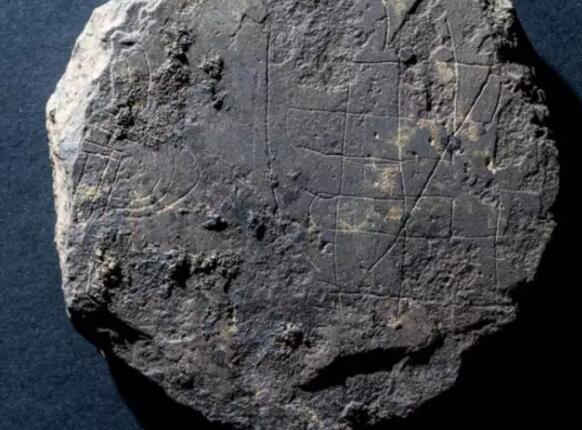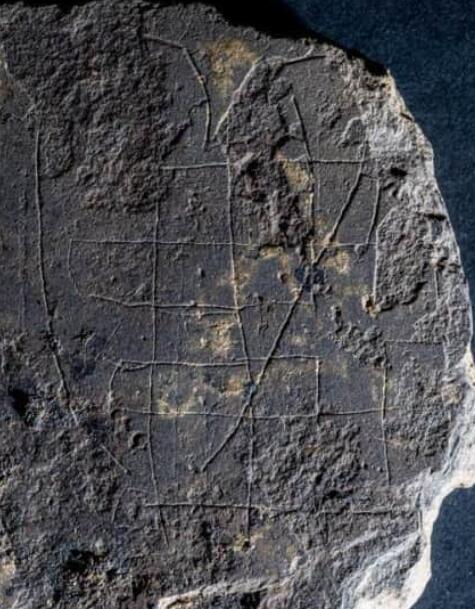Medieval games board found in search for Pictish monastery
A medieval gaming board has been found by archaeologists working to find a lost Pictish-era monastery in Aberdeenshire.
Archaeologist Ali Cameron said the board found near Old Deer was a “very rare” find with it used to play the Norse strategy game of Hnefatafl.A date for the board has yet to be established but a similar piece found in Birsay, Orkney, in 1989 was dated to the Late Iron Age/Pictish period from the 5th to 9th Century AD.

The medieval gaming board used to play Norse strategy game Hnefatafl. PIC: Michael Sharpe/Book of Deer Project
Ms Cameron said: “It is a very rare object and only a few have been found in Scotland, mainly on monastic or at least religious sites.
“These gaming boards are not something everyone would have had access to.”
A Solomon’s Knot, a symbol used to express the union of man with the divine or eternity and immortality, can also be seen on the board.
It may have been a later addition to the piece, Dr Cameron said with the board also possibly altered to a circular shape and used as a pot lid.
The search for the lost Pictish-era monastery in the Old Deer area has been ongoing for several years.
Earlier finds in Aberdeenshire brought archaeologists closer to pinpointing the whereabouts of the Christian site which was home to the Book of Deer, a book of gospels which contains the first written examples of Scottish Gaelic.
The monastery, built to spread Christianity into Pictland, disappeared about 1,000 years ago.
Deer Abbey - the remains which still stand - was then founded nearby in 1219AD.
Excavations unearthed a hearth and a thick layer of charcoal, with carbon testing dating the objects to between 1147 and 1260, which chimes with the later monastic period.

The medieval gaming board used to play Norse strategy game Hnefatafl. PIC: Michael Sharpe/Book of Deer Project.
But the discovery of a layer of stone and several post holes also indicate that remnants of a previously undiscovered building lie deep below the earth’s surface.
Ms Cameron has been on site for the past fortnight with volunteers to determine whether the stone and postholes relate to the earlier monastic site.
If the link to the monastery and the Book of Deer can be determined, it will be hailed as a discovery of national importance.
Ms Cameron said: “It’s really, really difficult to say what we have. I can’t call it at the moment.
“There are also remains of a wooden building and I have sent off samples of charcoal but we won’t know for another three months what the date will be.
“This has been a fantastic dig and people have been so enthusiastic. We don’t know yet what we have but looking for it is fun. If we don’t have the site of the monastery, then we will continue to look for it.”

